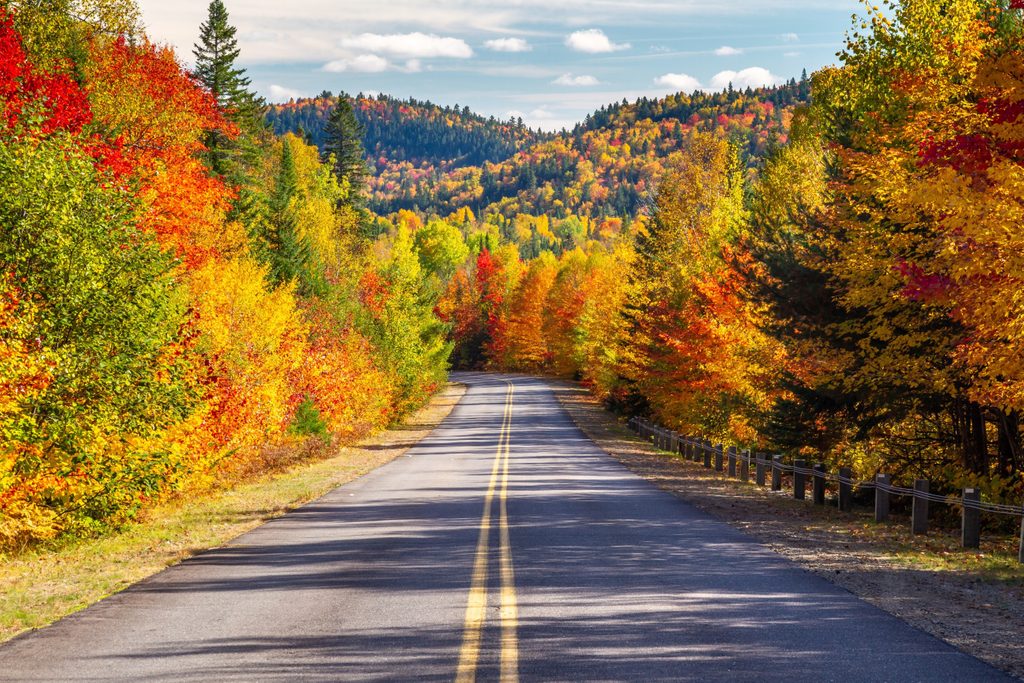Why Do Leaves Change Color in the First Place?
Updated: Sep. 22, 2022

You can count on the leaves to put on their show every year, but how do they do it?
One of the best parts of fall has to be watching the leaves on the trees transform from their habitual green to blazing reds, yellows, and oranges. But you might take this color change for granted—especially if you live in the northeastern or northwestern United States, or near one of these best places to see fall foliage in America.
So what’s actually behind this process, other than just “the start of fall”? Learn why Americans say “fall” instead of “autumn.”
Well, it has to do with the pigmentations in the leaves. The pigment that gives leaves their familiar green color is called chlorophyll. Chlorophyll aids the process of photosynthesis. Remember your middle school biology? “Photosynthesis is the process that plants use to make sugars from solar energy, carbon dioxide (CO2), and water (H2O) from their surrounding environment,” explains George Meindl, Professor of Environmental Studies at Binghamton University.
But chlorophyll is far from the only pigment in these leaves. Chlorophyll is there in the highest quantity, but the leaves contain plenty of other pigments as well. They serve a similar function, but they’re there in smaller quantities—and manifest in different colors. They include orange carotenoids and yellow xanthophylls. “These pigments are present in much lower concentrations, so the relatively abundant green chlorophyll molecules mask them,” Professor Meindl explains.
They mask them, that is, until fall rolls around. As fall progresses, winter gets closer, and during the winter, these trees are “shut down” in a way; they’re leafless and inactive. So no photosynthesis is taking place. Accordingly, the chlorophyll in the leaves starts breaking down. When this happens, the green color fades, and, sure enough, “the oranges and yellows that were always present, but hidden, can be seen!” Professor Meindl says.
Professor Meindl adds that there’s a little more going on within the leaves, too. In addition to the yellow and orange pigments that are always present, the leaves also contain some colors that only show up in the fall. “These pigments, called anthocyanins, help plants recover nutrients from the leaves…before they fall off the tree, and are only produced right before the leaves drop!” Meindl explains. These anthocyanins manifest in red and sometimes even purple, finishing off the gorgeous autumn tableaus we love to marvel at. You can see some incredible shots of this phenomenon with these 50 stunning photos of fall across America.
